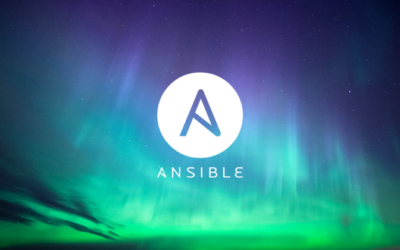The development of OpenNebula 5.4 has already started, and the biggest focus for this release is improving the vCenter integration. In particular, two areas will be addressed, networking and storage, in order to bring the vCenter up to speed with the open source hypervisor, KVM. After this release there will be virtually no differences between managing VMs on VMware or on KVM.
Networking
The goal in the vCenter network integration is to be able to create Networks (ie Port Groups and Distributed Port Groups) from within OpenNebula, not just consume then. We will be using the same mechanism as in KVM, ie, configuring the underlying network dynamically as required by the Virtual Machines, including the management of VLAN IDs.
There is a clear benefit from this new feature, as it implies a great improvement to the provisioning model. Typical use cases involves administrators creating groups of users or even VDCs on a multi-tenancy environment, where network isolation is a must. Currently, the administrators are required to create beforehand either Port Groups or Distributed vSwitches in the vCenter in order to provide tenants with isolation.
The second step is a big enterprise, which will take more than just one release to accomplish, which is to offer this functionality directly in OneFlow, with the ability to create new networks automatically whenever a service is launched. This will allow tenants to spin up network isolated multi-vm services without further management steps in vCenter or OpenNebula.
Storage
The aim here is to improve the vCenter storage drivers to be at the same level than the KVM counterpart, enabling:
- System Datastores
- Non persistent images
This again is a big enterprise that will take more than one release to accomplish.
This functionality will enable important features for the vCenter integration, like for instance the ability to allow the OpenNebula scheduler to intelligently choose the target system datastore (replacing Storage DRS!), support for storage quotas, disk resize both at boot and running time, and much more!
***
The Network and Storage import process will be greatly improved. Whenever a VM Template is imported, all the NICs and DISKs of the VM Template will be imported, and associated networks, datastores and images will be created.
Additionally, improvements in the driver efficiency will ensure the scalability of OpenNebula with very large scale infrastructures. The main focus will be time and memory efficiency, mainly in the monitoring operations.
OpenNebula roadmap is strictly based on your input. Thanks for your amazing feedback!





As a company using vOneCloud (with support), I’m aware that vOC is tracking quite a way behind OpenNebula development from what I can tell, ie, no updates to vOC in quite a while. If you’re undertaking a major reworking of some components to bring it to parity with KVM, then that’s understandable, but a timeline for the next vOC release would be appreciated.
Hi Tony,
We are currently in the process of stabilising vCenter features introduced in OpenNebula 5.2, like for instance support for clustered datastores (StoragePods), and solving relevant bugs. This is taking longer than expected, but we want to make sure that vOneCloud 2.2 is based on OpenNebula 5.2.1, which will iron this wrinkles out, delivering a smoother experience.
I can confirm that both OpenNebula 5.2.1 and vOneCloud 2.2 will be available in January 2017.